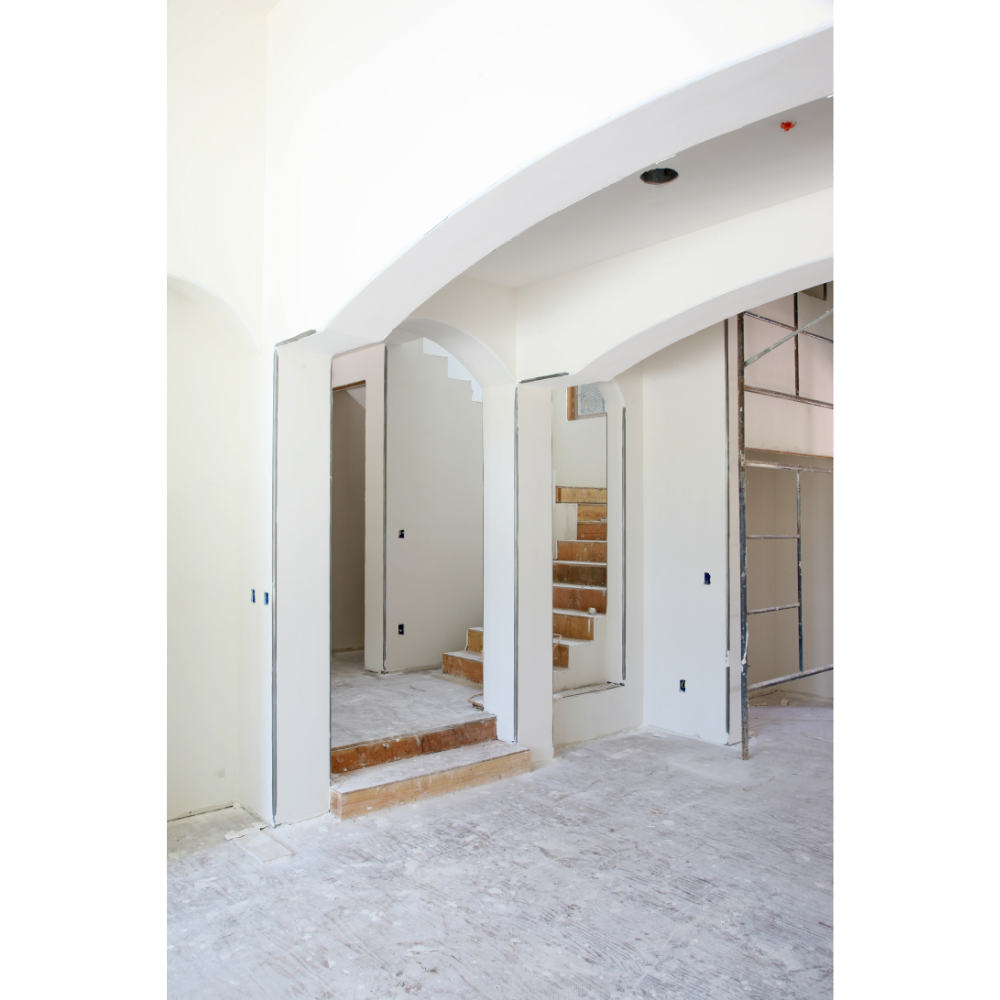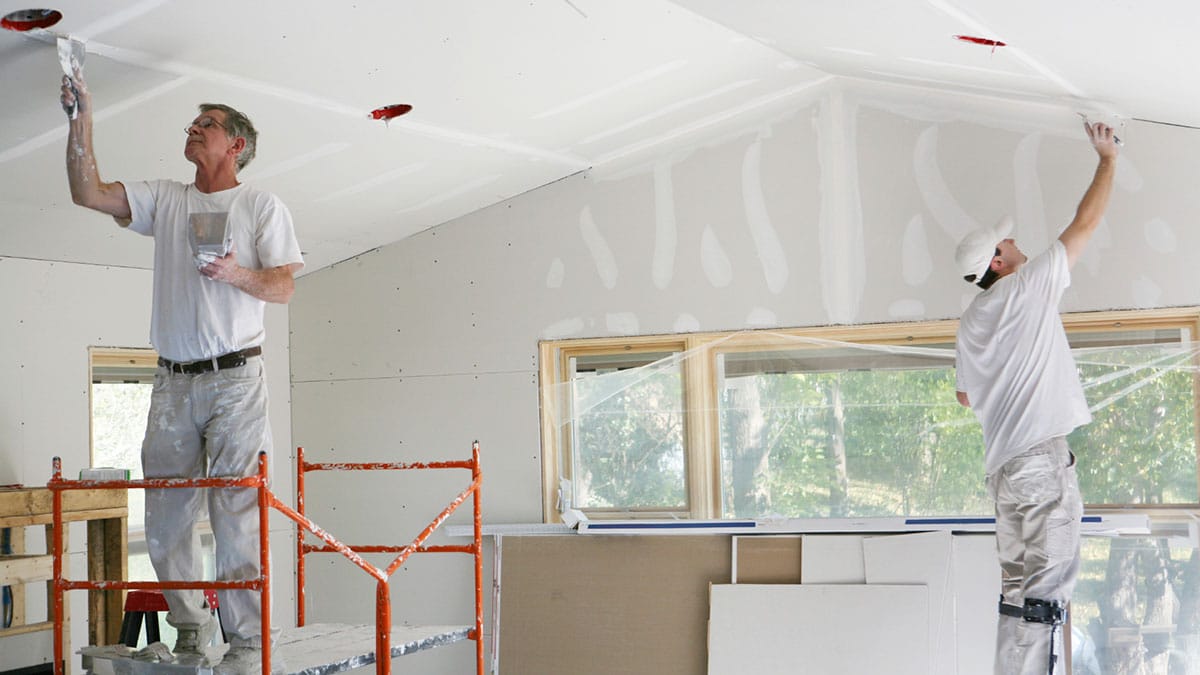Selecting the Right Drywall Contractors for Your Job
Selecting the Right Drywall Contractors for Your Job
Blog Article
Everything You Need to Understand About Drywall Installment: A Comprehensive Overview

Comprehending Drywall Fundamentals
Recognizing the basics of drywall is necessary for any kind of effective installment job. Drywall, likewise referred to as gypsum board or plasterboard, is a popular construction product used to develop indoor walls and ceilings. It contains a plaster core sandwiched in between two layers of paper. The plaster core supplies the needed strength and strength, while the paper layers secure the core from damages and give a smooth surface area for ending up.
One essential element of comprehending drywall is knowing the various types available. The most usual types consist of routine drywall, moisture-resistant drywall, and fire-resistant drywall. Regular drywall is suitable for most indoor applications, while moisture-resistant drywall is recommended for areas with high humidity, such as cooking areas and restrooms. Fireproof drywall is created to supply additional security versus fire and is commonly needed in multi-family residences and commercial structures.
One more trick facet of drywall basics is recognizing the basic dimensions and densities available. One of the most usual sizes are 4x8 feet and 4x12 feet, with thicknesses ranging from 1/4 inch to 5/8 inch. Thicker drywall is usually used for applications that call for increased fire resistance or soundproofing.
Devices and Products Needed for Drywall Setup
To efficiently install drywall, it is vital to have the required devices and materials on hand (drywall installation). These products and devices are important for accomplishing a professional surface and making certain the longevity of the installation
First and primary, you will require a determining tape to accurately measure the dimensions of the area where the drywall will certainly be installed. An utility knife is crucial for reducing the drywall to the required size and shape. In addition, a drywall saw can be made use of for making a lot more detailed cuts, such as around outlets or home windows.
Following, you will require a screw weapon or a drill with a screwdriver bit to safeguard the drywall to the wall surface studs. Screws, especially drywall screws, are required for connecting the drywall to the studs. It is necessary to make use of the proper length of screws to make certain a flush and protected installation.

In regards to materials, you will certainly need the drywall itself, joint compound for filling in seams and voids, and tape for strengthening the joints. Sandpaper or a sanding block will certainly be required for raveling the joint compound after it has actually dried.
Preparing the Area for Drywall Setup
Before proceeding with the drywall installation, it is essential to correctly prepare the space to make certain a effective and smooth installation process. Preparing the area entails numerous important steps that need to be adhered to carefully.
First of all, it is important to clear the location of any kind of furniture, fixtures, or various other things that may block the installment procedure. This will certainly provide the installers with enough space to function and navigate around. In addition, it is suggested to cover the floorings and any kind of staying products with protective sheets or ground cloth to avoid any damage or debris from falling onto them.
Next, it is necessary to inspect the walls and ceiling for any kind of existing damage, such as cracks, holes, or water stains. These problems must be repaired before the setup to ensure a smooth and even surface area for the drywall. Any type of loosened paint or wallpaper need to additionally be removed, and the wall surfaces should be thoroughly cleansed and cleaned.
Furthermore, electrical and pipes fixtures ought to be shut off and secured to avoid any kind of mishaps or damages during the setup procedure. It is essential to switch off the power supply to the area and get rid of any type of electric cover layers before starting the installment.
Lastly, it is advisable to consult with an expert or describe local building ordinance to make certain conformity with safety laws and get any necessary licenses prior to continuing with the installment. By properly preparing the area, you can make sure a effective and successful drywall installment procedure.
Step-by-Step Overview to Hanging Drywall
To make certain an effective drywall setup, it is essential to follow a step-by-step overview for hanging the drywall (Edmonton drywallers). continue reading this This procedure needs precision and interest to information
First, collect all the necessary tools and materials, consisting of drywall sheets, an energy knife, a drywall saw, a tape measure, a drill, and screws.
Next, begin by determining the dimensions of the wall or ceiling where the drywall will certainly be set up. Transfer these measurements onto the drywall sheets, marking where cuts require to be made - drywall Edmonton. Utilize a straight side and an energy blade to score the drywall along the marked lines, then snap it along the score line
As soon as the drywall sheets are cut to dimension, they can be held on the wall surface or ceiling. Beginning at one edge and position the first sheet up and down against the framing. Use screws to secure the drywall to the studs, making sure to leave a little space in between sheets for expansion.
Continue this procedure, working your means throughout the wall surface or ceiling. Make sure that each sheet is level and flush with nearby sheets. Make use of a drywall saw to remove any type of required openings for electric outlets or switches.
Ending Up Techniques for a Specialist Appearance
Since the drywall sheets have More hints been effectively hung, it is important to employ ending up strategies that will certainly lead to a specialist and polished look. Accomplishing a flawless and smooth surface on drywall requires mindful focus to detail and making use of appropriate tools and methods. Among the primary steps in the finishing procedure is to fill up the joints and screw indentations with joint compound. This can be done by using a slim layer of substance over the joints utilizing a taping knife, and then installing drywall tape right into the compound. Once the tape is in area, another layer of compound must be applied over it, feathering the sides to produce a smooth shift. After the substance has actually dried, it is necessary to sand the surface to get rid of any flaws and produce a seamless finish. A post sander or sanding block can be utilized for this function. Last but not you could try these out least, the wall surfaces need to be topped and repainted to complete the finishing procedure. Making use of top notch paint and using it equally with a roller or brush will certainly make sure a professional and lasting surface. By complying with these completing strategies, your drywall installment will certainly have a specialist and sleek look.
Verdict
To conclude, comprehending the basics of drywall installment is essential for an effective project. By using the proper devices and materials, preparing the space adequately, and following a step-by-step overview, one can achieve a professional-looking coating. Attention to completing methods will certainly further enhance the total look. With this comprehensive guide, anyone can confidently tackle a drywall installation project.
The most typical types consist of normal drywall, moisture-resistant drywall, and fire-resistant drywall. Routine drywall is ideal for the majority of indoor applications, while moisture-resistant drywall is recommended for locations with high moisture, such as kitchen areas and bathrooms. Screws, particularly drywall screws, are necessary for attaching the drywall to the studs. These problems need to be fixed before the installation to ensure a smooth and even surface for the drywall. By adhering to these finishing methods, your drywall setup will certainly have a professional and sleek look.
Report this page